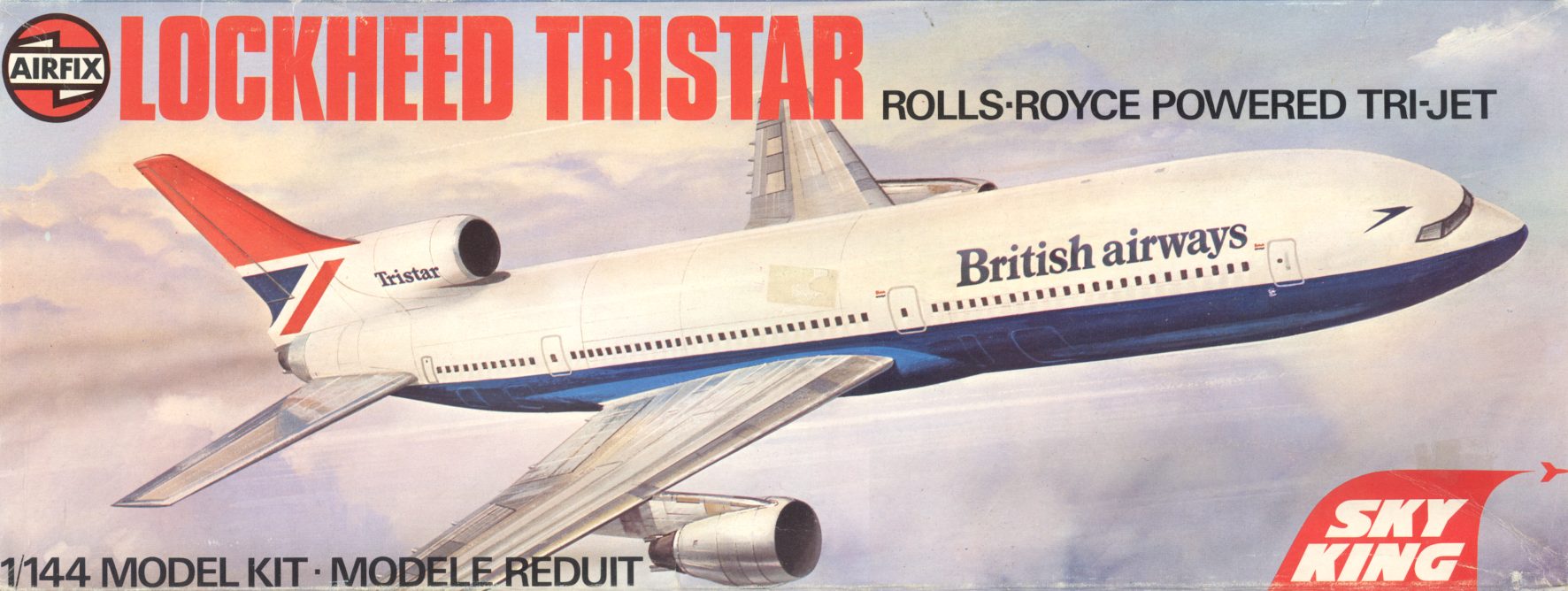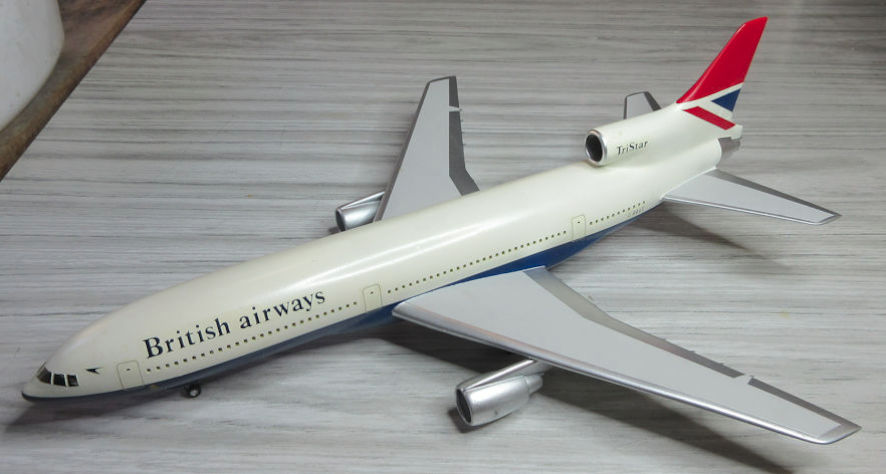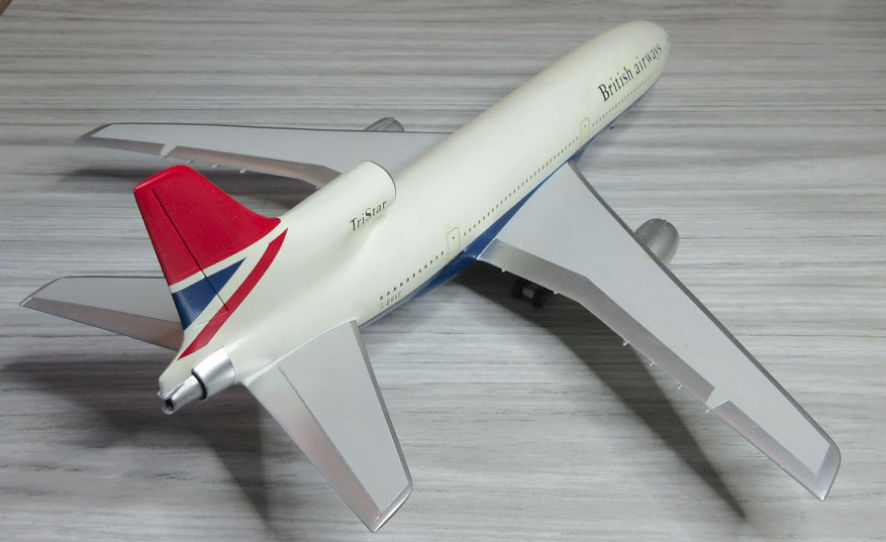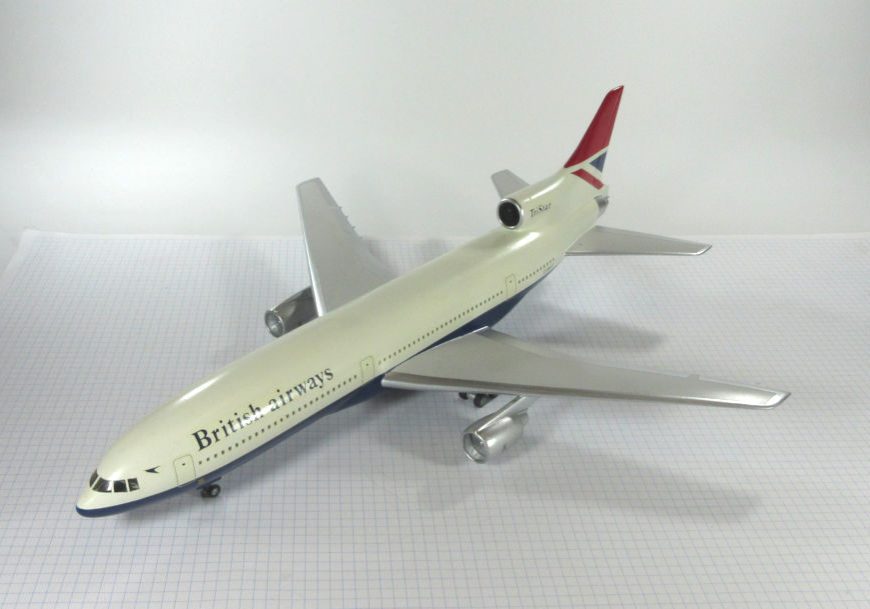The L-1011 was the last in a long line of Lockheed airliners and the only successful Lockheed jet powered airliner. It began life in 1968 to meet an American Airlines requirement for a large capacity short-to-medium range airliner which also led to the design and construction of the Douglas DC-10 which eventually won that contract. Even so, other airlines found the L-1011 attractive and it was ordered by several Unites States airlines in the late 1960s, with the prototype flying in November 1970.
Both Lockheed and Rolls Royce, the engine supplier, ran into severe financial problems so it was not until April 1972 that the L-1011 was granted certification and flew its first revenue earning flight later in the same month. The L-1011 proved to be an excellent aeroplane, exceptionally quite and popular with operators and passengers alike. It entered service with a number of airlines around the world with the order by BEA (later absorbed into British Airways) being one of the most significant.
A number of different versions were developed including the L-1011-100 with additional fuel for longer range, the L-1011-200 with more powerful engines to give better performance from ‘hot-and-high’ airports and the L-100-500 with the fuselage reduced in length by 4.11 metres and increased fuel tankage for long haul services with a range of 9653km (5998 miles).
Despite its popularity and good performance the problems of the late 1960s meant the L-1011 never matched the success of its competitor, the DC-10. The situation was not helped by the general recession in the commercial air transport industry in the late 1970s and, in 1981, Lockheed announced that production would be phased out during 1984 after the completion of remaining orders with a total of 247 aeroplanes manufactured. They remained popular because of their relatively cheap purchase price although their running costs were higher. The Royal Air Force also acquired six L-1011 from British Airways and converted them into dual purpose strategic transports and inflight-refuelling tankers.

Just as Airfix (and perhaps Frog) made the 1/72 scale popular by making so many kits in that scale and flooding the market with them Airfix also initiated and popularised the 1/144 scale for airliners. The first 1/144 Airfix kits were marketed under the ‘Skyking’ label and were of the Sud Aviation Caravelle and deHavilland Comet. Since then 1/144 has become almost synonymous with airliner kits with the exception of Hasegawa’s 1/200 kits and Heller’s attempt to popularise 1/125.
This kit is one of the old Airfix Skyking range that was first released around mid 1971 before the L-1011 had even entered service. In the original version the kit came with Air Canada markings but this version comes in British Airways livery. (The instruction sheet for this kit gives the impression that they were yet to enter service with BA when it was released which means it probably dates from before 1974. Which just goes to show how long kits can go into storage before they end up being made.) This kit shows its age in lots of ways.
The fuselage and wings were both warped and the only way I could get the wings to come out with anything like the shape they should have was the good old ‘almost-boiling’ hot-water treatment and gently bending them back into the right shape. The upper and lower wing halves also didn’t match up very well and needed a fair bit of filling and filing to bring them up reasonably well. The engines have a solid blank rear surfaces where the exhaust gasses from the fan emerge (I spent some time plotting ways to make them look more realistic but finally came to the conclusion that so much work wasn’t worth the effort and just painted them black).
The other thing that Airfix specialized in was doors where ever they appear on the real aeroplane, passenger and freight and undercarriage doors that are normally closed except when the undercarriage is being lowered or retracted – a total of 16 that have to be glued in place and then sanded back to merge with the rest of the fuselage. The other thing that Airfix used to do was supply rows of tiny windows transparencies but they are more trouble than they are worth and it is easier just to leave the windows open and finish them off with a tiny dab of PVA glue when the rest of the model is completed.
Assembly really is straight forward, there’s nothing complex about putting together most 1/144 airliner kits. The real trick with them is to get a good finish. The decals looked, if anything, even more antiquated than the kit itself, thick, glossy and yellowing. Fortunately I happened across a cheap Microscale decal set that had BA markings which took care of that problems. As usual I approached this model with some trepidation because there is so much silver and white, but just at the right moment, a modeller friend whispered in my ear that silver is an excellent base colour for white. He is absolutely right (you learn something new all the time). After some struggles with other finishes I painted the entire model in good old Humbrol silver (Number 11) which looks okay in 1/144 and then only two coats of white on top was sufficient to give a good finish.
The British Airways tail design is elegant but not too complex to mask and the use of semi-glass house paints (that come in tins costing about $5 each) gave just the right amount of gloss for a model in this scale. Valma, who knows about such things, commented that this model looks really elegant. I tend to agree with her.


Leigh Edmonds
February 2002
